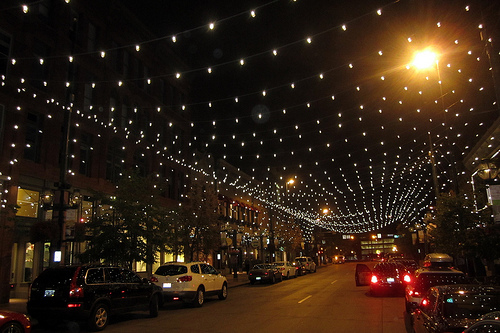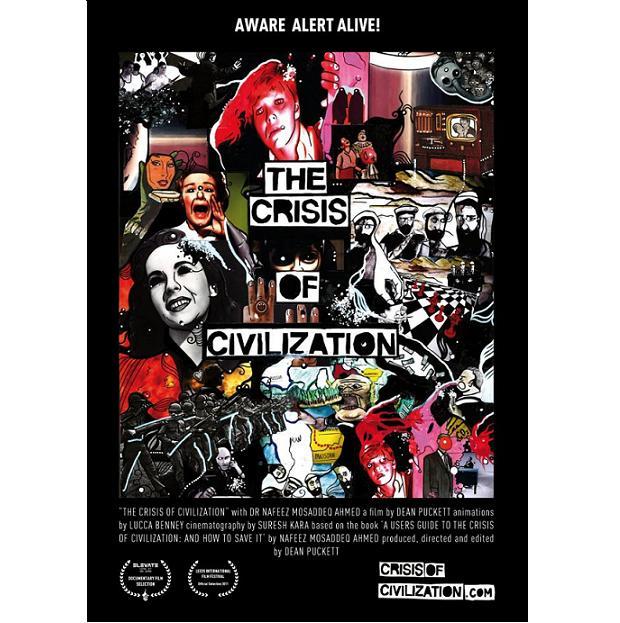 Lower Downtown Denver has become the city’s night life hub — and a laboratory for community-level sustainability.Photo: Wally GobetzI once worked for a New Yorker who loved to wisecrack that the only difference between Denver and yogurt was that “yogurt’s got culture.”
Lower Downtown Denver has become the city’s night life hub — and a laboratory for community-level sustainability.Photo: Wally GobetzI once worked for a New Yorker who loved to wisecrack that the only difference between Denver and yogurt was that “yogurt’s got culture.”
Looking at the Mile High City’s endless sprawl of lookalike, Anywhere, U.S.A. subdivisions, it’s easy to understand where he was coming from. But in a former warehouse district just off of downtown, an innovative experiment in neighborhood-level sustainability is underway that could show New York and the rest of the country what really rocks the house when it comes to eco-centric living.
The project, and others like it around the country, started with a simple observation: While cities have been leaders in the effort to combat climate change, much of the action within cities occurs at the neighborhood level. “The neighborhood is a geography, a scale that resonates with people,” says Rob Bennett, executive director of the nonprofit Portland Sustainability Institute. “Neighborhoods have always been a powerful and important part of how we view city-building, and how we view ourselves as citizens.”
Bennett is among a group of urban thinkers who envision neighborhoods powered by their own micro-solar or geothermal power grids. They imagine city blocks that operate as single, interconnected systems, saving gobs of energy and resources in the process, and small manufacturing districts where companies make use of each other’s waste streams. Planning geeks call them “eco-districts,” and say they’ll be the next big (or not-so-big) thing in sustainability.
The project in Denver is the brainchild of Living City Block, a nonprofit that adopted two square blocks in Lower Downtown (known by locals as LoDo). Architect Paul Todd says that 20 years ago, the place was a wasteland of boarded up, Victorian-era warehouses. He and his wife (and architectural partner), Kirstin Todd, bought a building in 1991 that was slated for demolition. “We removed the entire second floor and most of the roof,” he says. “We completely rebuilt it from the ground up.”
At about the same time, the city poured money into the area, tearing out a viaduct that once arched over a nearby rail yard and putting in walking malls, trees, and bike racks. Today, the area is the nightlife epicenter for the entire metro area, drawing crowds of shoppers, revelers, and diners even on weeknights. (Eat it, Yoplait.)
Living City Block President Llewellyn Wells says government agencies have put a lot of resources into retrofitting and weatherizing homes in recent years, and an entire industry has sprouted up to “green up” corporate and college campuses — but little attention has been paid to retrofitting smaller commercial space, he says. If Living City Block can figure out a way to retrofit LoDo, it could pave the way for other projects, tying in everything from energy generation and efficiency to storm water and waste water management.
“There are tens of thousands of other neighborhoods like this around the country,” Wells says.
After an initial round of community meetings and design charrettes, a vision of the block emerged that would include rooftop gardens, solar panels, and energy-efficient retrofits. Two buildings — the Todds’ and one owned by the Alliance for Sustainable Colorado, an environmental nonprofit — will be tricked out to generate all, or close to all of their own electricity. By the end of next year, Living City Block expects to cut the area’s energy use in half. By the time the project is finished, block-wide savings should be between 75 and 80 percent.
But turning ideas like these into street-level reality has proven to be harder than anyone expected. Last year, the Department of Energy awarded Living City Block $600,000 in energy analysis and modeling work. Workers are now outfitting the buildings with fancy new meters so that the block can monitor its energy savings over time. But the project still faces some formidable obstacles: To fund the actual retrofit work, Living City Block and the owners of the LoDo buildings need to convince a bank to lend them money — a tall order when you consider that the loan will be leveraged against future energy savings, not business profits. “Easier said than done,” Wells says.
The second challenge is equally daunting: holding a group of property owners together long enough to make something like this work. The extensive legal issues that come with this kind of communal investment require some kind of formal governing body, akin to a homeowner’s association — currently, there isn’t one. And then there are simple questions of leadership and attention span.
“They started out strong, with a lot of enthusiasm,” says Paul Todd. “But getting everybody together and trying to think about the block holistically without scaring people about giving up property or development rights — that has been a big challenge. It’s been tough to get people to show up to information meetings.”
While Living City Block has a second initiative underway in Brooklyn, it stepped away from a similar project in Washington, D.C., this year. Wells will only say that local funding was an issue.
But the group’s trials and errors offer lessons for other efforts to green neighborhoods. “We’re pioneers — we’re out there taking the hits.” Wells says. “We’ve learned that there has to be an involved community on the ground for this to work. What we care about in the end are better communities, not just better buildings.”
Stay tuned for more stories about neighborhood-scale sustainability efforts, from Portland to Washington, D.C.



